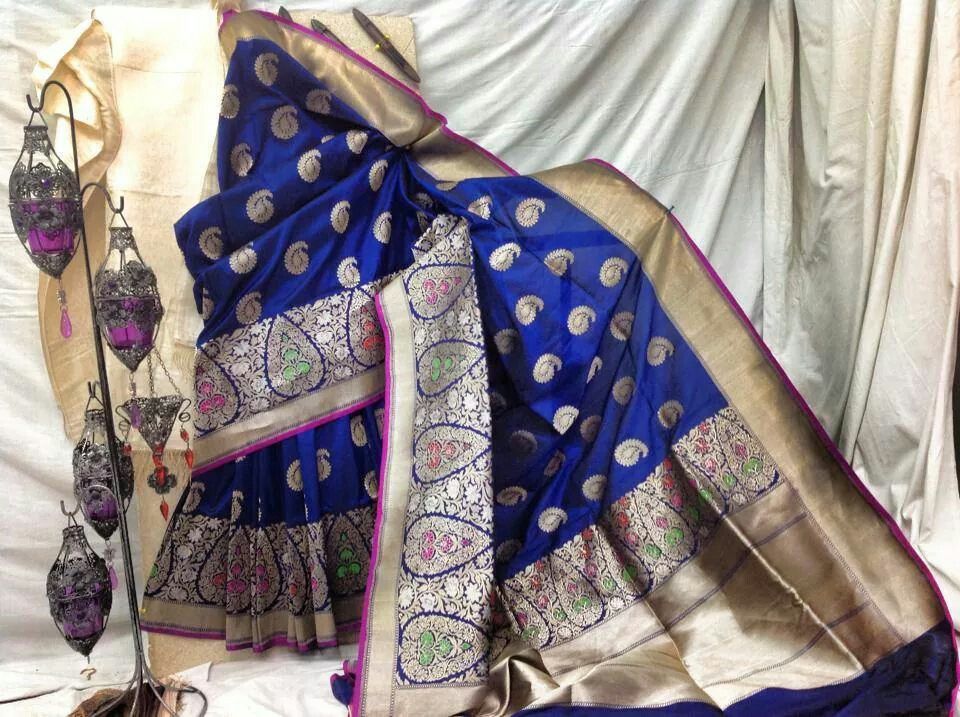India, rich in culture and tradition, boasts a kaleidoscope of vibrant textiles and attire. The Banarasi saree is a timeless emblem of tradition, elegance, and craftsmanship. Originating from the historic city of Varanasi, also known as Banaras, these sarees have transcended centuries, weaving themselves into the nation’s cultural fabric. Admired for their intricate designs, luxurious fabrics, and rich heritage, Banarasi sarees hold a special place in the hearts of women across India and beyond.
Join us as we unravel the story behind these exquisite sarees, exploring their origins, craftsmanship, cultural significance, and enduring appeal.
Origin and Heritage
The story of the Banarasi saree is as rich and intricate as the sarees themselves. It traces its origins back to ancient Varanasi, a city steeped in history and tradition. Varanasi has long been renowned for its silk-weaving industry, with references to its exquisite textiles dating back to the Vedic period. Over the centuries, the art of weaving Banarasi sarees flourished, with skilled artisans honing their craft and passing down their skills from generation to generation.
Also Read: 6 Trailblazing Ethnic Fashion Trends to Take Cues From for That Comely Vibe
At the heart of every Banarasi saree lies the labour of love of these skilled artisans. The weaving process is meticulous, involving various stages of preparation, dyeing, and weaving. The sarees are typically crafted from fine silk threads, carefully selected for their quality and lustre. Many sources, including Mughal architecture, flora, fauna, and geometric patterns, inspire the motifs adorning Banarasi sarees. Each motif is intricately woven into the fabric using techniques such as kadwa, kadhua, and jangla, resulting in a saree that is an actual work of art.
Craftsmanship and Design
The hallmark of a Banarasi saree is its exquisite craftsmanship and design. These sarees are characterized by their opulent fabrics, intricate designs, and luxurious feel. The weaving process is labour-intensive, often taking weeks or even months to complete. Skilled artisans painstakingly weave each motif into the fabric, paying careful attention to detail and ensuring that every saree is a masterpiece.
Banarasi sarees come in various styles and designs, each with its unique charm. The most popular varieties include pure silk (Katan), organza (Kora), georgette, and Shatter. Each variety has its distinct characteristics, with pure silk sarees prized for their rich texture and sheen, while organza sarees are known for their lightweight and translucent appearance. Regardless of the variety, every Banarasi saree exudes timeless elegance and sophistication, making it the perfect attire for weddings, festivals, and other special occasions.
Cultural Significance
Beyond their aesthetic appeal, Banarasi sarees hold deep cultural significance in Indian society. Worn on auspicious occasions such as weddings, festivals, and religious ceremonies, these sarees symbolize grace, auspiciousness, and prosperity. The rituals associated with draping a Banarasi saree are steeped in tradition, with each fold and crease carrying a symbolic meaning. For many women, wearing a Banarasi saree is not just a sartorial choice but a way of connecting to their cultural roots and honouring their heritage.
Banarasi sarees are also cherished as heirlooms, passed down from mothers to daughters as a symbol of love and tradition. Many families have sarees in their possession for generations, each carrying the memories and stories of past generations. In this way, Banarasi sarees serve as a tangible link to the past, preserving the rich cultural heritage of India for future generations to cherish and appreciate.
Challenges and Preservation Efforts
Despite their enduring popularity, the artisans who create Banarasi sarees face numerous challenges in today’s fast-paced world. Competition from machine-made replicas, fluctuating market demands, and economic hardships threaten the survival of this age-old craft. However, efforts to preserve and promote the art of Banarasi weaving are underway. Various organizations and government initiatives provide support and recognition to artisans, helping them sustain their livelihoods and preserve this cherished tradition.
Additionally, there has been a growing appreciation for handcrafted and sustainable fashion in recent years. Consumers increasingly seek products with a story and a soul, recognizing the value of supporting traditional crafts and artisans. This shift in consumer mindset bodes well for the future of Banarasi sarees, ensuring that this cherished tradition continues to thrive for generations.
Conclusion
In conclusion, the Banarasi saree is more than just a piece of clothing; it is a testament to the rich tapestry of Indian culture and craftsmanship. From its origins in ancient Varanasi to its enduring appeal in modern fashion, the Banarasi saree encapsulates the essence of Indian tradition and elegance. As we celebrate the timeless beauty of Banarasi sarees, let us also pledge to support the artisans who dedicate their lives to preserving this cherished tradition. By choosing to wear a Banarasi saree, we not only adorn ourselves in exquisite elegance but also become custodians of a cultural legacy that spans centuries.





